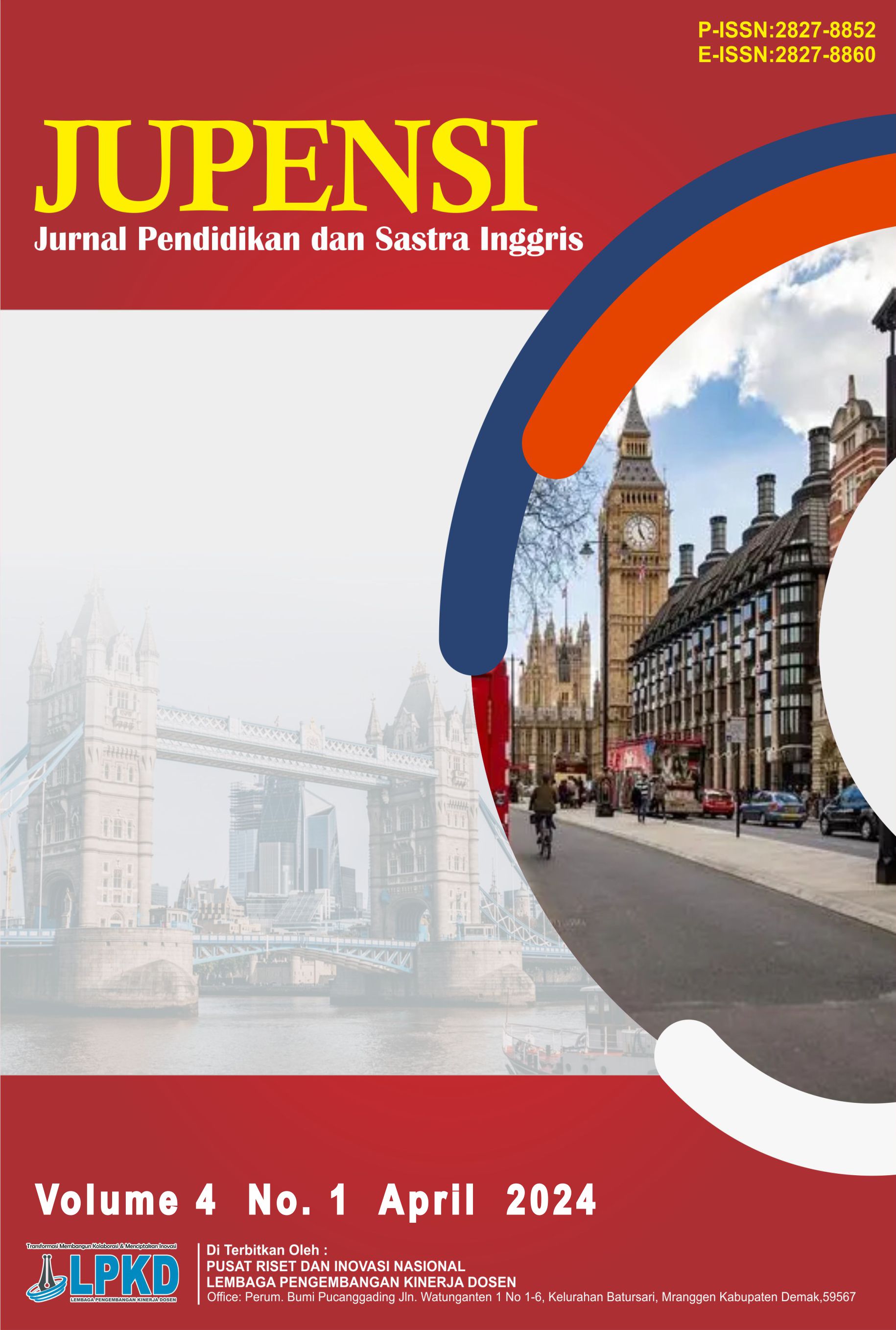Learning Model Based on Perspective’s Student
DOI:
https://doi.org/10.55606/jupensi.v4i1.3365Keywords:
Learning method, Learning Environment, communicationAbstract
English is a language used for verbal and written communication. A mastery of communication is being able to decipher meaning from data, ideas, and feelings and use language to progress domains such as science, technology, and culture. English language competency is necessary to stay current with changes around the world. This study looked at how various teaching strategies and classroom setups affect students' interest in exploring art and culture. The results show that when the right techniques are used, excellent facilities increase students' motivation and facilitate easier and more effective learning. Furthermore, the provision of high-quality learning environments and the effective use of instructional strategies can support and enhance students' motivation to study.
Downloads
References
Abraham, M. (2003). Educational Administration in Nigeria. Port Harcourt: Pan Unique Publishing Co, Ltd
Aunurrahman, A. (2014). Study and Learning. Bandung: Alfabeta.
Braine, G. (2011). Introduction. In G. Braine (Ed.), Teaching English to the world: History, curriculum, and practice(2nd ed., pp. xi–xiii). Mahwah, NJ: Lawrence Erlbau m.
Collins, P., & Lee, F. K. J. (2005). “English Grammar in Current Hong Kong Textbooks: A Critical Appraisal” TESL Reporter, 38(1), 37–49.
Chou, M. H. (2015). “English Language Education in Formal and Cramschool Contexts: an Analysis of Listening Strategy and Learning Style” Taylor and Francis Group, 9(1).
Ellis, R. (2006). “Modeling Learning Difficulty and Second Language Proficiency: The Differential Contributions of Implicit and Explicit Knowledge” Applied Linguistics, 27(3), 431–463.
Graddol, D. (2006). English Next. London, UK: British Council.
Hallak, J. (1990). Investing in the Future Setting Educational Priorities in the Developing World. IIEP and Pergamon Press.
Leonardi, V. (2011). “Pedagogical Translation as a Naturally Occurring Cognitive and Linguistic Activity in Foreign Language Learning” Annali Online di Lettereferrara, 1(2), 17–28.
Majid, A. (2008). Plan of Study. Bandung: PT Remaja Rosdakarya.
Nazari, A., & Allahyar, N. (2012). “Grammar Teaching Revisited: EFL Teachers between Grammar Abstinence and Formal Grammar Teaching” Australian Journal of Teacher Education, 37(2).
Neolaka, F., Manggoa, M., & Nenotek, S. A. (2016). “The Implementation of Curriculum 2013 at State Junior High School 1 Central Kupang, Kupang Regency Academic Year 2013/2014” Journal of Education: Theory, Research, and Development, 1(10).
Prameswari, N. S., Saud, M., Amboro, J. L., & Wahyuningsih, N. (2020). “The Motivation of Learning Art & Culture Among Students Indonesia” Taylor and Francis Group, 21(1).
Richards, J. C., & Reppen, R. (2014). “Towards a Pedagogy of Grammar Instruction” RELC Journal, 45, 5–25.
Uno, H. B. (2008). Theory of Motivation and Its Measurement. Jakarta: Bumi Aksara
Downloads
Published
How to Cite
Issue
Section
License
Copyright (c) 2023 Jurnal Pendidikan dan Sastra Inggris

This work is licensed under a Creative Commons Attribution-NonCommercial-ShareAlike 4.0 International License.









